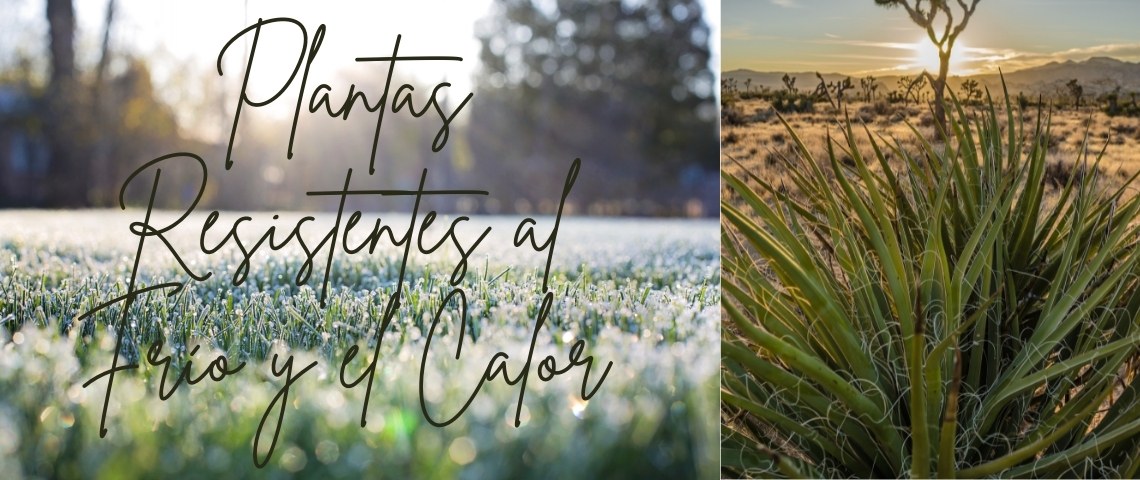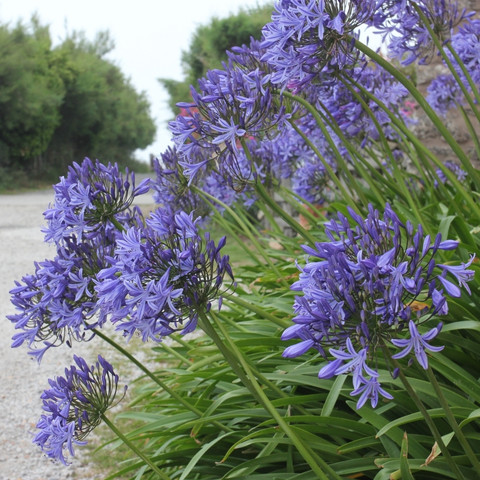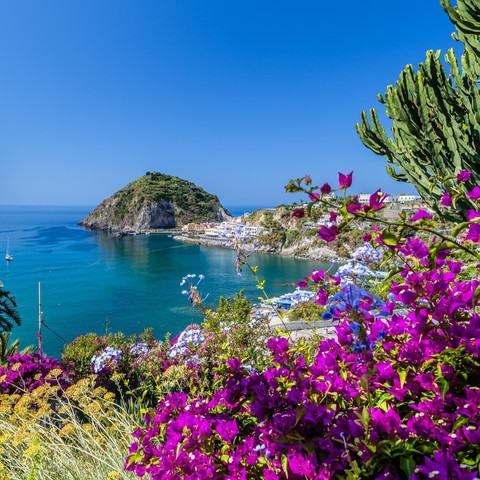-
9 plants suitable for outdoor areas that can withstand heat and cold

The summer season has arrived, a time when temperatures soar to unprecedented heights, and those of us with plants, either indoors or out, naturally wonder whether our green friends can withstand the heat. Moreover, we also concern ourselves with their ability to survive the harsh winter months. Which plants can we purchase that are frost-hardy? What techniques can we employ to safeguard our plants from the biting cold and the summer heat?
It's crucial to have this information at our fingertips, as there are plants that perish when exposed to extreme cold, while others, originating from subtropical regions, are surprisingly resilient to frost. By understanding which plants thrive in our climate and how to care for them during the colder months, we can ensure our plant collections remain healthy and thriving throughout the year. Let's find it out in this item, read all about 9 plants suitable for outdoor areas that can withstand extreme temperatures.
heat- and cold-hardy plants
Have you ever been curious about how some outdoor plants can withstand the cold and others can't, and how they can withstand the summer heat as well? Well, plants are fantastic living beings that behave differently in different situations in order to survive and live longer.

Below we discuss the mechanisms used by plants to resist extreme cold or frost:
- Plants darken their pigmentation (sometimes approaching black) in order to be able to absorb more heat from sunlight on their surface.
- Some species "hibernate" like animals. In this case what happens is that they stop their activity and the plants enter a process called vegetative rest.
- On the other hand, there are plants that increase the concentration of their cellular juices in order to harden their internal organs, making them more resistant to cold.
Keep reading this article and we will tell you which subtropical plants are the best to keep and resist in very cold weather. Below you will find information about plants that are resistant to cold and heat.
1) lavandula (lavander)
Lavender is a very popular outdoor plant to give a Mediterranean look to your garden, balcony or terrace. There are different types of lavender. For example, the Lavandula angustifolia is a hardy lavender and excellent for a dry climate. In addition to its beautiful flowers, the plant also releases a delicious scent. It is resistant to light frosts and in summer it can withstand high temperatures very well.
2) nerium oleander
Continuing the list we come to this cold hardy outdoor shrub commonly known as oleander (Nerium oleander). It is one of the best choices if you are looking for a cold hardy plant that does not require a lot of care. It can withstand temperatures as low as -10 degrees Celsius.

3) lily-of-the-nile (agapanthus africanus)
The lily-of-the-Nile (agapanthus africanus) is also known as the African lily and is one of the most valued outdoor plants for its size and beauty. It has white, blue, lilac or purple inflorescence flowers.
Although this plant can be planted directly in the ground, it is common to see them in pots, so if you want cold hardy potted plants this is a good option. They can withstand temperatures below freezing, as long as they are no lower than -15 degrees Celsius.
4) cast-iron plant (aspidistra elatior)
Another stalwart addition to your garden is Aspidistrathe Aspidistra, also affectionately known as Donkey's Ears or Cast-Iron Plant. This hardy perennial can tolerate temperatures as low as 32 degrees Fahrenheit, making it an excellent choice for UK gardens. The Aspidistra is a leafy plant that requires minimal maintenance, simply watering it when the soil surface and 5 centimetres below are dry to the touch.
5) japanase maple tree (acer palmatum)
The Acer palmatum, more commonly known as the Japanese Maple, is a robust and adaptable plant that's well-suited to British gardens. As a subtropical species, it's able to thrive in both cold and warm temperatures. During autumn, its striking palmate leaves transform into a rich, deep red hue before shedding completely. If you want to keep your Japanese Maple healthy and thriving, ensure the temperature doesn't exceed 100 degrees Fahrenheit and provide adequate watering, aiming for at least two good soaks per week. Red maple or green Japanese maple can withstand frosts as low as -10 degrees Celsius (14 degrees Fahrenheit).
6) leyland cypress (cupressocyparis leylandii)
The Leyland cypress (Cupressocyparis leylandii) is a substantial evergreen, renowned for its rapid growth, capable of increasing by up to 50 centimetres in height annually. This versatile plant is often employed in British gardens and outdoor spaces for its ability to screen views, requiring minimal maintenance and thriving in a variety of soil conditions, including the saline soils found near the coast and the harsh, cold temperatures experienced in inland regions.
7) carnation (dianthus caryophyllus)
This charming flowering plant is a staple for balcony gardeners in Spain, as it brings a touch of elegance and vibrancy to outdoor spaces. To thrive, this lovely plant requires a spot that receives direct sunlight and consistent watering to promote an abundance of blooms. During the warmer months, it will be adorned with an array of flowers, whereas during the colder months, its flowering will be less prolific.

8) paper plant (bougainvillea)
The Bougainvillea is a climbing plant that's often used to adorn and embellish pergolas, renowned for its profusion of flowers and vibrant colour. It's a low-maintenance plant, capable of withstanding high temperatures and even drought, but it does require careful watering to avoid waterlogging. While it's relatively hardy and can tolerate cold winter months, it won't thrive in frosty conditions and will cease flowering during this time. Bougainvillea can withstand temperatures as low as -3 to -7 degrees Celsius (26 to 19 degrees Fahrenheit).
9) chinese windmill palm (trachycarpus fortuneii)
Trachycarpus fortunei (Chinese windmill palm), a resilient palm tree native to China, has adapted to thrive in the face of extreme temperatures. During the scorching summer months, its waxy leaves help to reflect sunlight and conserve moisture, protecting it from the intense heat. Meanwhile, its underground rhizome allows it to survive freezing winters by storing energy and nutrients, allowing it to regrow new leaves come springtime. Additionally, Trachycarpus fortunei's thick, fibrous roots provide insulation against frost and cold winds, shielding the delicate above-ground growth from harm. In areas with particularly harsh weather conditions, this palm's ability to acclimate to temperature fluctuations allows it to thrive in all regions of Spain, except in areas above 1200 metres of sea level.
With proper care and protection, Trachycarpus fortunei can become a stunning and long-lived addition to any garden or landscape.
more hardy plants
There are still more subtropical outdoor plants that are resistant to cold and heat:
- Ttrachycarpus palm tree
- Prunus cerasifera
- Bamboo fargesia
- Clematide (Clematis spp.)
- Callistemon (Callistemon citrinus)
- Clivia miniata
- Viburnum tinus
- Yucca plant (Yucca Elephantipes)
frost precautions
Another important piece of information is the general tips you should take into account to protect your plants from the cold, because not only humans should be protected from frost, but plants as well:
- Add mulch on the surface, in order to give an extra layer to the soil.
- Cover your plants or trees with a blanket or cardboard, this applies in case you have a young plant species. It is important to cover them before dark.
- Water the soil thoroughly, moist soil holds heat better than dry soil. But beware of hard frosts.
In a need of a hardy plant for your terrace or garden in Spain? Find your favourites at FlorEspaña!
heat precautions
We provide you 5 basic tips for this summer for heat precautions for outdoor plants:
- Water wisely: Avoid overwatering your plants during hot weather, as this can cause more harm than good. Check the soil moisture by sticking your finger into the soil up to the first knuckle. If the soil feels dry, it's time to water. Water your plants in the early morning or evening to minimize evaporation.
- Provide shade: If possible, move potted plants to a shaded area during the hottest part of the day (usually between 11am and 3pm) to prevent scorching. You can also use umbrellas, canopies, or shade cloth to create a shaded area.
- Mulch and cover: Mulch around the base of your plants to retain moisture and regulate soil temperature. Covering your plants with a breathable cloth or sheet at night can help retain moisture and protect them from extreme temperatures.
- Avoid fertilizing: Fertilizing during hot weather can cause excessive growth, making your plants more susceptible to heat stress. Instead, delay fertilizing until the weather cools down or use a balanced, water-soluble fertilizer that won't promote rapid growth.
- Monitor and prune: Keep an eye on your plants' condition and prune them regularly to prevent overheating. Remove any dead or dying leaves or stems to prevent the spread of disease and promote healthy growth.
No comments found.